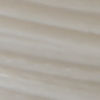FAQS
The most common lines for fly fishing are Weight Forward (WF) lines matched to your fly rod weight—that’s really all you need to get started. If you have a 5WT fly rod, a floating WF5 (Weight Forward, 5 Weight) line will handle almost all the freshwater fishing you will do. If you’re using an 8WT fly rod for striped bass fishing, an intermediate sinking 8WT fly line will work well.
- Floating vs. Sinking Lines
Fish eat most of their food underwater. Whether it’s subsurface insects, worms and leeches, other fish, or crustaceans, most of the time you want your flies to be low in the water column. If you regularly fish lakes or saltwater, or you simply want to be more effective fishing subsurface on rivers and streams, then carry a full sinking fly line matched to your rod weight for those situations when fish are down deep rather than looking for food in the film or on the surface of the water. You’ll be waiting a long time for a leader on a floating line to sink down deep and reach fish on the bottom. A full sinking line, or even sink tip line, is a more effective and efficient way to reach deeper dwelling fish, faster.
- Saltwater vs. Freshwater Lines
Differences between saltwater and freshwater lines include the line density, taper, and stiffness. While it’s fine to use either line in either environment, each line performs best in the conditions it’s engineered for. Saltwater floats line more easily than freshwater, so a floating freshwater line must be less dense, and therefore have a larger diameter, than its saltwater counterpart. Saltwater lines can be denser and therefore thinner, and their tapers tend to be optimized for distance and accuracy. Some saltwater lines are crafted with stiffer cores to prevent them from becoming ‘floppy’ in tropical heat.
- Fly Line for Streamers
If you’re a salmon and steelhead purist swinging brightly colored flies, or you’re a “meat chucker” targeting big browns in deep water, look for fly lines designed to get streamers low in the water, like full sinking fly lines, sink tip fly lines, and steelhead/salmon-specific fly lines. These lines will have an integrated sink tip (or they’ll be weighted through the length for a full-sink line) and a larger-diameter middle section to aid in casting larger flies. Using less effort and energy is a big plus if you intend to fish big streamer flies all day. But if you’re primarily fishing smaller streams, a standard floating line with weighted flies may be preferable. Use your water-type preference to choose the fly line that will work best for the type of streamer fishing you do.
- Fly Line for Nymphing
The large, abrupt taper in most nymphing lines helps turn over long and heavy nymphing leader setups and indicator rigs with more ease. And when the fish strike, the line’s brightly colored tip acts as an indicator to allow you to see subtle takes, immediately. Nymphing fly lines are also designed to mend more easily, as you strive to maintain that perfect dead drift. If you’re Euro nymphing, the Orvis Hydros Tactical Nymphing fly line combines a subtle light taper and ultra-thin diameter to increase sensitivity and reduce sag, even on windy days.
Fly lines come in different weights to match the fly rod. So, if you have a 5- or 6-weight rod, you’ll use a size 5 or 6 line. The smaller the number, the more flexible the rod, thus the more delicate the line. If you’re casting dry flies to spooky fish on a small stream with calm water, you’ll want a 1- or 2-weight rod with a size 1 or 2 line. By the time you get up to a 9-weight rod, you’re in fly rods designed for saltwater fishing, and you’ll need a heavier size 9 line to cast large flies long distances, to target species like snook, striped bass, or redfish.
The fly rod weight corresponds to the fly line weight. For example, a 5-weight rod takes a 5-weight line, a 10-weight rod takes a 10-weight line and so forth.
Yes, and this practice is called overlining. Some beginning anglers like to overline their 5-weight rod with a 6-weight line to help cast more accurately, until they get a good “feel” for the cast and can use a 5-weight line. Overlining may add more drag, however, and often compromises distance.
The best color fly line stays within a neutral earth-tone spectrum. Grays, greens, creams, tans, and such make great choices.
Not all fly line is floating line. Some fly line sinks to get your fly down deep in the water column, and some line includes a sink tip to get your fly just below the surface.
The general rule is that a fly line will last between 100 and 250 days on the water, depending on conditions, wear, and how well you maintain it.
Most anglers consider a double taper (DT) line the best for dry flies. If you're specifically looking for the best line to present delicate dry flies at short distances (under 30’), choose a DT line.
A weight-forward (WF) line is the easiest to cast since the heavy front section can reach long distances.
Fly-Fishing Line & Backing
Fly line designed for longer casts and improved accuracy leads to more success on the water. Explore Orvis fly line and backing to find the perfect solutions for saltwater or freshwater applications. We engineer our line and backing for better performance, impressive fly delivery, and improved line management. Whatever type of fly line you need—sinking, floating, sink tip, Skagit, Spey, steelhead, or trout—you’ll find it here. Our fly lines are engineered to deliver the consistent casts and delicate presentations required to fool even the spookiest trout. Our trout fly line allows for exceptional roll casting, and it mends like a dream. Or reach for a high-performance, quick-loading saltwater line for big-game angling. Add a little insurance to your outfit with fly-line backing—a strong, trustworthy way to lengthen your line so you can land that brag-worthy grip ‘n grin fish that loves to run. Braided fly backing offers extra yardage for anglers stalking trout, bass, and salmon; it’s just right for freshwater or light saltwater environments. For those big saltwater fish adventures, stack more on the fly reel with ultrathin, high-capacity gel-spun backing. Discover the ideal fly line and backing for your preferred angling experience—ours offer precise technology, developed through more than a century of experience.
)
)
)
)
)
)
)
)
)
)
)
)
)
)
)
)
)
)
)
)
)
)


)
)
)
)
)

)
)

)
)

)
)
)